We Came Second In The Cinderella Competition YEAH!
Sunday, May 22, 2016
 Huai'an, Jiangsu, China
Huai'an, Jiangsu, China
Hey Hey and a Big G'Day toya,
Look at yourself!
You’re so dirty and so ugly!
Everyone loves the play Cinderella!
When choosing which fairytale to do we had no idea that almost every other school would choose the same one. It might have had something to do with the fact that most of the Grade 5 class books all had Cinderella in them at some stage throughout the past two terms, but anyhow. After a month of rehearsing in the classroom, we boarded our little yellow school bus and off we went full of confidence.
All of my Grade 5 & 6 students (11 in total) were part of the play.
Our school was eighth in list of twenty and by the seventh there had already been five Cinderella’s and my students were horrified. Luckily though, three of the first five didn’t wear costumes nor did they have a traditional and gentle Chinese swan dance prepared for when the Prince asked Cinderella to dance.
Our costumes worked a valuable treat.
The traditional Chinese dance also caught everyone by surprise.
When we finished instead of bored sighs we got a standing ovation which I believe was more for the dance than the play itself. But I must say, they did dance with slow graceful perfection. After us we were all subjected to another six Cinderella’s (one of which wasn’t called Cinderella) so when the microphone guy told the audience that next up was a play called 'My E Friend’ we all relaxed and became enthusiastic again.
My E Friend started off very well……
That was until one E Friend told the other (via email) that he had a story to tell. I guess there is no real need for me to elaborate any further as to what story it was. At the end of the day we were presented with a second place trophy and an amazing musical and dance piece took first prize which I think everyone was glad about. My students made many new friends from different schools around the city area and I played a role in my first play since early Primary School.
All in All, it was a wonderful day!
Photos under the Cinderella infor below.
Here are nine Cinderella stories from around the world you might not know.
(Taken from Wikipedia)
Cinderella has come a long way from its origins as a tale about persecution and the dangers of systemic oppression. Dating back to the first century, what was once a story about a Greek slave girl becoming an Egyptian queen has evolved into something much more magical, romantic, and ultimately supernatural.
If there's another word to describe talking mice, I'd like to hear it.
In fact, the versions we know now are based on pieces of a story that is relatively recent in the grand scheme of literature. Charles Perrault's late 17th-century tale Cendrillon (or The Little Glass Slipper) laid the groundwork for Disney's 1950 animated film, with both plots revolving around a young girl who, after being forced into servitude at the hands of her stepfamily, is ultimately rescued by a prince.
Men, magic, and mayhem: the three constants.
There are reportedly 345 to 1500 versions of Cinderella in rotation.
Including the version in which Cinderella is forced to eat her own toe.
FRANCE
Written by Charles Perrault in 1697, Histoires ou contes du temps passé, Cendrillon is the tale Disney and friends initially drew from. Revolving around a young girl whose abusive stepmother and stepsisters force her into servitude, this version saw the introduction of the pumpkin, the fairy godmother, and the glass slipper.
The "cinder" element essentially came from Perrault, too.
Since our heroine awoke every morning covered in ash from the fire, she was given the nickname by her terrible family. And, the similarities don't stop there since Disney's 1950 classic adopted almost every aspect of the story. The songs, the cat named Lucifer (seriously: why?), and Cinderella's DIY dress being ripped apart by her stepsisters — who, in Perrault's world, go on to marry lords after apologizing for being the worst.
EGYPT
Forget everything you've ever known about fairy tales: Rhodopis, the first version of Cinderella, actually originated in first century BC/AD (and, is also believed to be loosely based on a real person). Written by Herodotus and adapted by Greek historian Strabo, it went on to appear in Aelian's Varia Historia in the 2nd and 3rd centuries, then showed up again in the 1800s in various fairy tale books. However, unlike the stepmother storyline we all know and tolerate, Rhodopis is a young Greek girl who's been kidnapped by pirates and sold into Egyptian slavery. And, while her master is kind, the fellow slaves are not, so she befriends animals before finding herself in fancy shoes in the Pharaoh's court
CHINA
Written between 618-907 AD, Yeh-Shen first appeared in the T'ang Dynasty, and preceded the European Cinderella by a millennium. It's also dark: In addition to the stepmother killing Yeh-Shen's only friend (a fish), said stepmother — and her daughter — are crushed to death in a shower of stones. (Yikes.) On the bright side? Yeh-Shen goes on to meet and marry the King, thanks to the spirit of the fish, and the magic of fish bones (the fish is a symbol of prosperity).
ITALY
In a posthumous 1634 edition of Il Pentamerone, Giambattista Basile's La Gatta Cenerentola (or The Cat Cinderella) came to light and redefined "not appropriate for children." In this tale, a governess encourages Zezolla to kill her stepmother, which backfires when the governess becomes stepmother #2 and brings her own six daughters into the home. Zezolla is banished to the kitchen and loses her given name, becoming Cenerentola. That is, until magic prevails and she charms the prince at the traditional soiree, and they're reunited afterward thanks to footwear.
GERMANY
In 1812, the brothers Jacob and Wilhelm Grimm published Kinder-und Hausmarchen, which is where Cinderella first made her appearance in Germany. This time she was Aschenputtel (translation: "Ash Fool"), a girl who loses her mother, braves the abuse of her stepfamily, then cries so much at her mother's grave that a magical trees grows there. Fortunately, that tree helps outfit Aschenputtel for the ball, where she meets her prince and loses her shoe. When the prince comes to their home, the stepsisters each try to fool him — one cuts off her toe to make her foot fit in the shoe, the other cuts off her heel. The prince notices all the excess blood, and eventually Cinderella is found. (And, then birds peck out the stepsisters' eyes at the wedding, and they go blind forever.)
RUSSIA
Similar to Germany's dramatic version, Russia's folktale of Baba Yaga and Vasilisa (written down in the mid-1800s) is a little more adult. Centered around a girl named Vasilisa, it sees its protagonist sent to a witch (Baba Yaga) by an evil stepmother (who assumes Vasilisa will die). Surprise! She thrives instead, despite the witch's hut made of human bones. Vasilisa survives her brush with death and reunites with her dad with the help of a magic doll. (But, not before Baba Yaga severely abuses the cat whose only job was to kill Vasilisa and — you guessed it — scratch out her eyes.)
AMERICA
True, the 1950 movie borrowed heavily from the French story, but Disney's animated Cinderella was actually an answer to post-war culture and fashion, by acting as a guide to the New Look. Ultimately, on top of making the film more kid-friendly by piggybacking on the magic animals found in Snow White and Sleeping Beauty, it was ultimately a marketing tool, dictating the merits of consumerism since Cinderella's dress was based on designs by Dior. Who would've thought Disney had an agenda?
NATIVE AMERICAN
Taken from 1884's The Algonquin Legends of New England and 1894's Legends of the Micmacs, The Hidden One is a folktale that arguably varies the most from Cinderella — especially since there's more of an emphasis on morals than on revenge. In this story, a warrior named Strong Wind can make himself invisible, which he does to test the truthfulness of the women who'd like to marry him. This time, he meets three sisters, two of which lie and say they can see him (when they can't). However, the youngest — who they've abused out of jealousy — tells the truth, so she and Strong Wind end up together.
WEST AFRICA
Chinye: A West African Folktale (written in 1994 by Obi Onyefulu and illustrated by Evie Safarewicz) offers a reprieve from the dude-on-a-marriage-mandate by revolving around a young girl named Chinye, whose stepmother sends her to fetch water in a dark, scary forest. Fortunately, Chinye's patience and good heart prevail, leading her to treasure in the woods (and through that, financial freedom from her greedy stepmother and sisters). Chinye then goes on to live a great life and help others with her newfound riches — which totally beats a glass shoe and prince, right?
Beers N Noodles toya…..shane
___________________________________________________________
The soundtrack to this entry was by Hole
The album was ‘Live Through This’
____________________________________________________________
Other Entries

 Huai'an, Jiangsu, China
Huai'an, Jiangsu, China
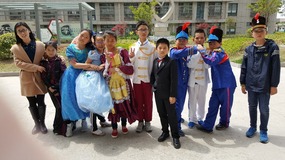
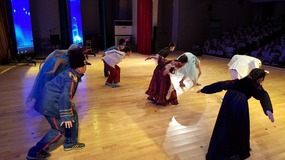






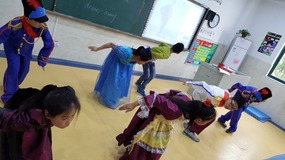
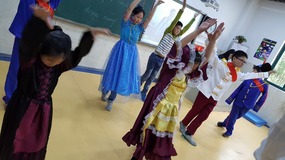
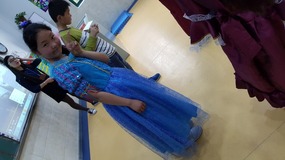
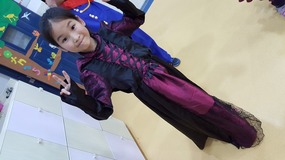
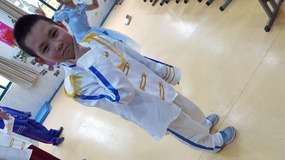
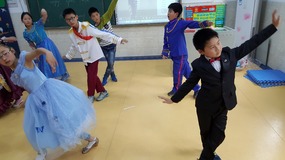
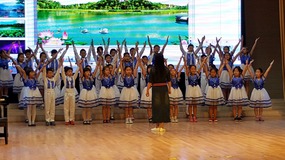
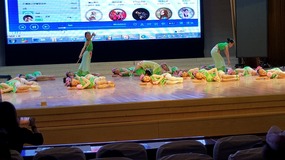
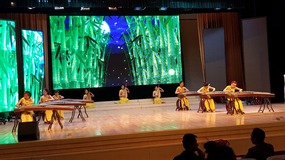



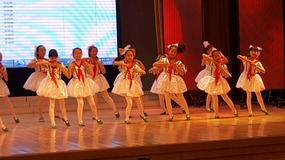


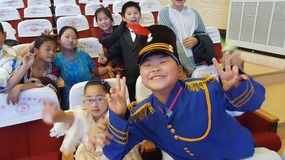





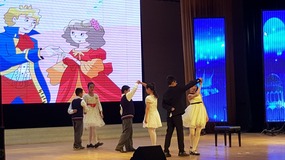
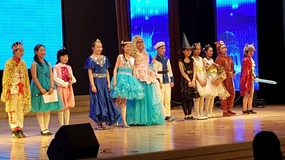
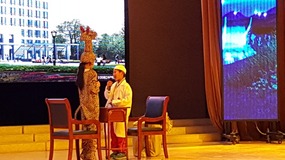
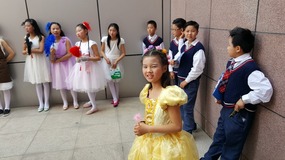
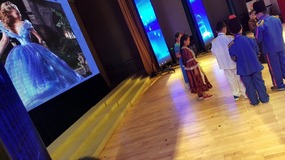
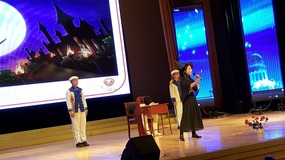
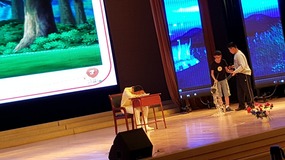


2025-05-22